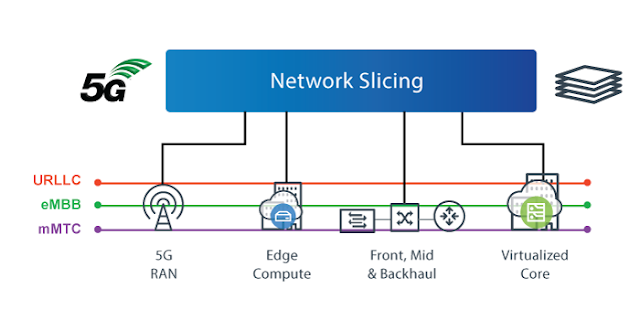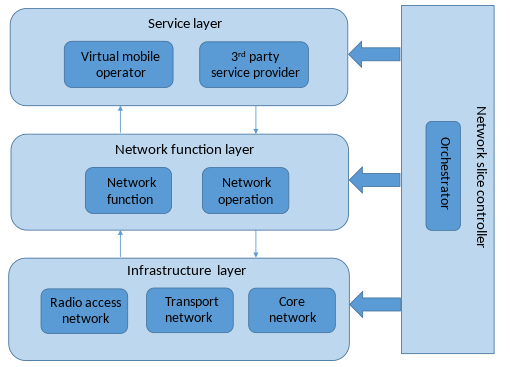5G Network Slicing
5G Network Slicing is a technology that allows for multiple virtual networks on a single physical 5G network. It enables tailor-made connectivity services for diverse applications and users.
5G Network Slicing revolutionizes how we think about mobile connectivity. By partitioning a single physical network into multiple virtual networks or "slices," it offers customized bandwidth and latency settings to meet specific needs. This technology serves a wide range of uses, from enhanced mobile broadband (eMBB) to ultra-reliable low-latency communications (URLLC) and massive machine-type communications (mMTC).
Each slice operates independently, ensuring that the performance of one does not affect the others. Businesses and consumers benefit from this adaptive network, which brings unparalleled flexibility and efficiency to the forefront. With 5G Network Slicing, network operators can efficiently manage their resources, cater to diverse market requirements, and pave the way for innovative services and applications.
The Concept Of 5g Network Slicing
Imagine a superhighway with dedicated lanes for different types of vehicles. This is what 5G Network Slicing promises for digital networks. It's a revolution in the way data travels, and it's set to change the tech world.
Defining 5g Network Slicing
5G Network Slicing is like having personalized internet lanes. Each lane, or "slice," is a unique virtual network. These slices cater to specific requirements of applications, services, or devices. By creating slices, networks meet diverse needs—like speed, capacity, or security—without building separate physical networks.
Benefits of 5G Network Slicing include:
- Customized experiences for different services
- Enhanced speeds and lower latency for critical tasks
- Improved network efficiency and flexibility
The Building Blocks Of Network Slicing
Think of network slicing as a puzzle. Each piece serves a unique function. The main pieces include:
| Building Block | Role |
|---|---|
| Software-Defined Networking (SDN) | Manages data flow for each slice |
| Network Functions Virtualization (NFV) | Runs network functions on virtual machines |
| Orchestration | Coordinates resources across the network |
Together, these technologies allow a 5G network to support diverse cases:
- Smart homes
- Remote surgeries
- Autonomous vehicles
- IoT devices
Benefits And Advancements
5G network slicing unlocks many new opportunities. It allows networks to meet specific needs. This lets carriers offer custom experiences. It is like having many custom networks in one. Let's explore how this changes things.
Tailored Connectivity Solutions
Network slicing offers unique solutions. It adapts to different use cases. Think of it like custom clothes. They fit just right. Network slices do the same for data services.
- Businesses get what they need. They can have faster speeds and more security.
- Healthcare can rely on speedy data. This can help save lives.
- Even gaming can get smoother with less lag. Each slice is like a VIP lane for data.
Impact On Internet Of Things (iot)
IoT devices are everywhere. From smart homes to factories, they need strong connections. Network slicing makes these connections better.
| IoT Aspect | Impact of 5G Slicing |
|---|---|
| Device Battery Life | Slices optimize data flow. This saves battery. |
| Device Performance | Special slices mean devices work smoothly. |
| Automation Levels | Reliable slices allow more automation. |
Overall, 5G slicing brings sharper IoT utility. Devices communicate better. They are more reliable. Efficiency is up. What's more, future tech will lean on this heavily.
Technical Mechanisms Behind Slicing
Imagine 5G Network Slicing like cutting a giant cake. Each slice serves a different guest with unique tastes. The 5G network does something similar. It splits the network into multiple virtual networks. Each part meets specific needs for different applications. Two key players make this magic happen: SDN and NFV. Let's see how they work their tricks.
Role Of Software-defined Networking (sdn)
Software-Defined Networking (SDN) acts like the brain of the operation. Think of it as a smart traffic controller. It tells data where to go on the network. This makes the network more flexible and quick. It helps in creating slices without using new hardware.
- Centralized control: SDN moves the control panel from hardware to software. This makes changes and updates easier and faster.
- Directs traffic: It guides data packets along the best routes. This happens through virtual paths set up for each slice.
- Improves efficiency: By managing network resources smartly. Resources go where they are needed most.
Function Of Network Function Virtualization (nfv)
Network Function Virtualization (NFV) changes traditional network appliances into virtual services. Think of these services as smartphone apps. Just as you download apps on your phone, NFV deploys network services on virtual machines.
- Flexibility: Easily start or stop services. It's like turning apps on or off.
- Scalability: Adjust services to handle more or less traffic, just as apps may need more power to run.
- Cost-saving: No need for specialized hardware. Use your existing servers and storage.
Challenges And Considerations
Understanding the Challenges and Considerations of 5G Network Slicing is key for its successful deployment. This technology brings tailored connectivity, but it also introduces various hurdles that need attention.
Security Implications
5G Network Slicing creates unique Security Implications. Each slice, serving a different purpose, must be secure. The stakes are high.
- Data protection must span across slices.
- Access control is vital to prevent breaches.
- Monitoring for threats must be constant.
Ensuring the safety of each slice demands robust security protocols and continuous vigilance.
Complexity In Implementation
Complexity in Implementation is another major hurdle for 5G Network Slicing. It involves numerous technical details.
- Setting up multiple slices needs precision.
- Maintaining performance standards across slices can be tough.
- Coordination among various stakeholders is essential.
Deploying network slices means overcoming technical complexities and ensuring they work together seamlessly.
Embracing 5G network slicing unlocks a new realm of digital possibilities. It offers tailored connectivity that meets diverse demands. From enhanced mobile experiences to reliable industrial automation, this technology is pivotal. As we advance, network slicing will transform how we interact with the internet, carving paths to innovation and efficiency.
Embrace the future; embrace 5G slicing.





